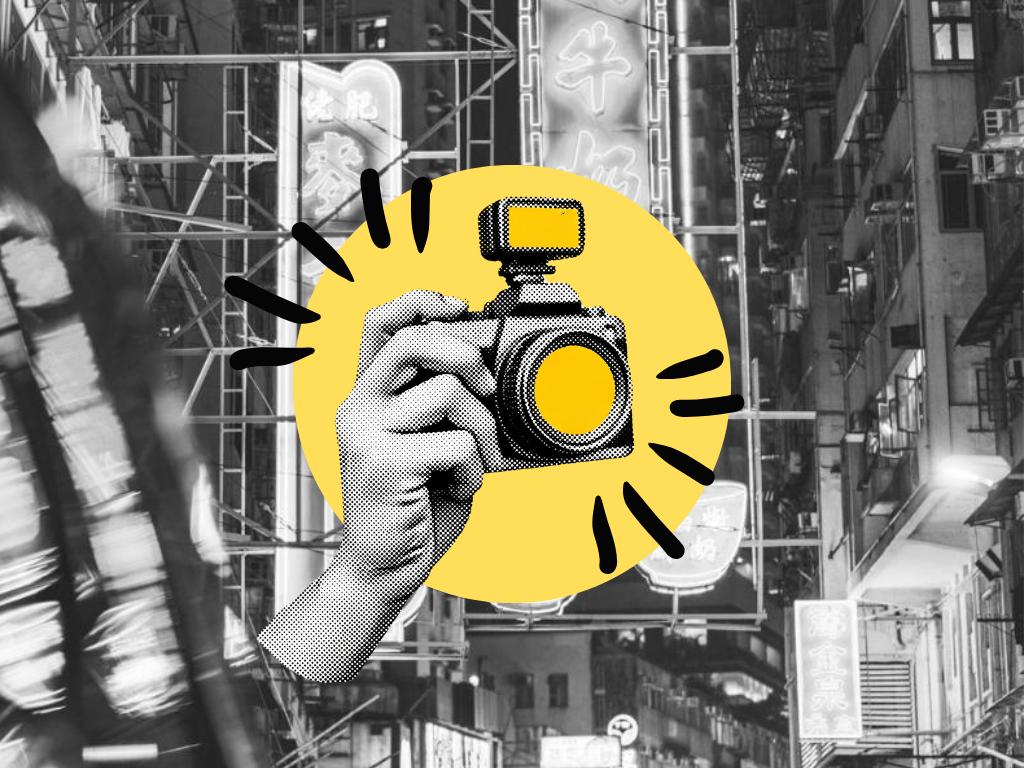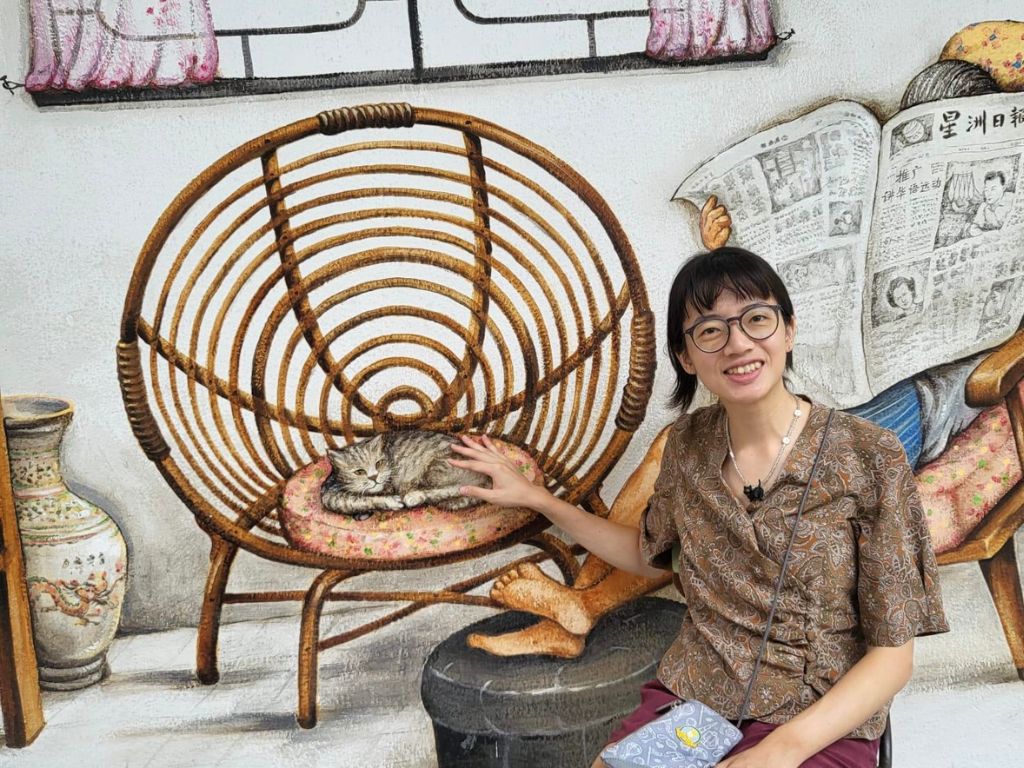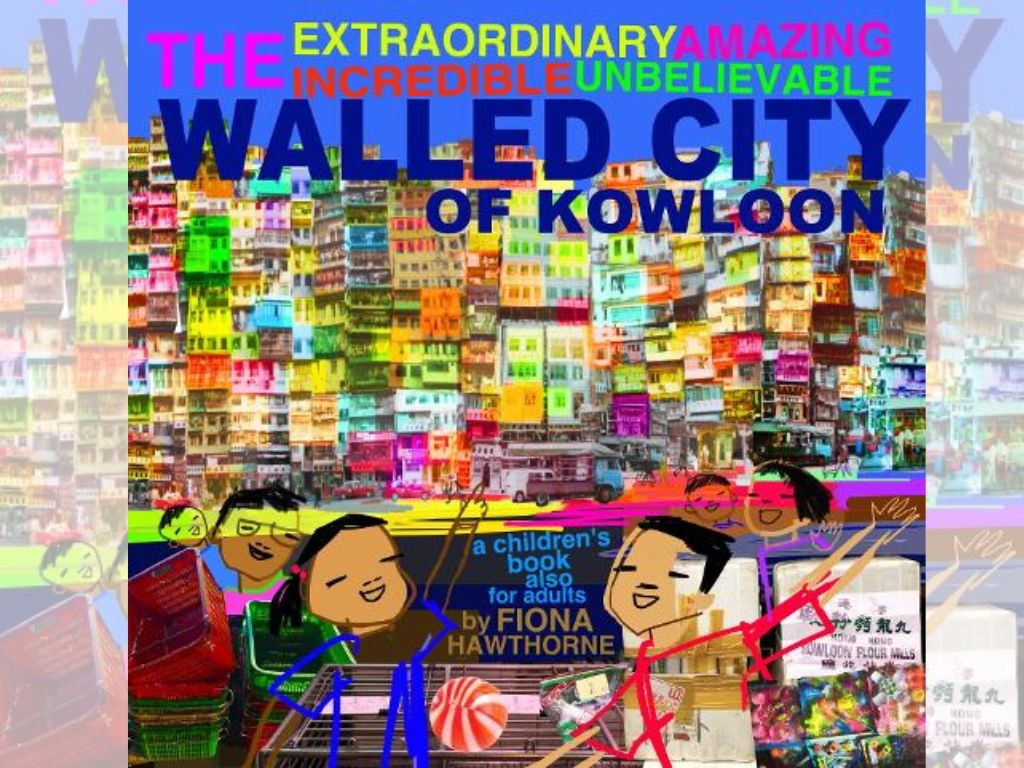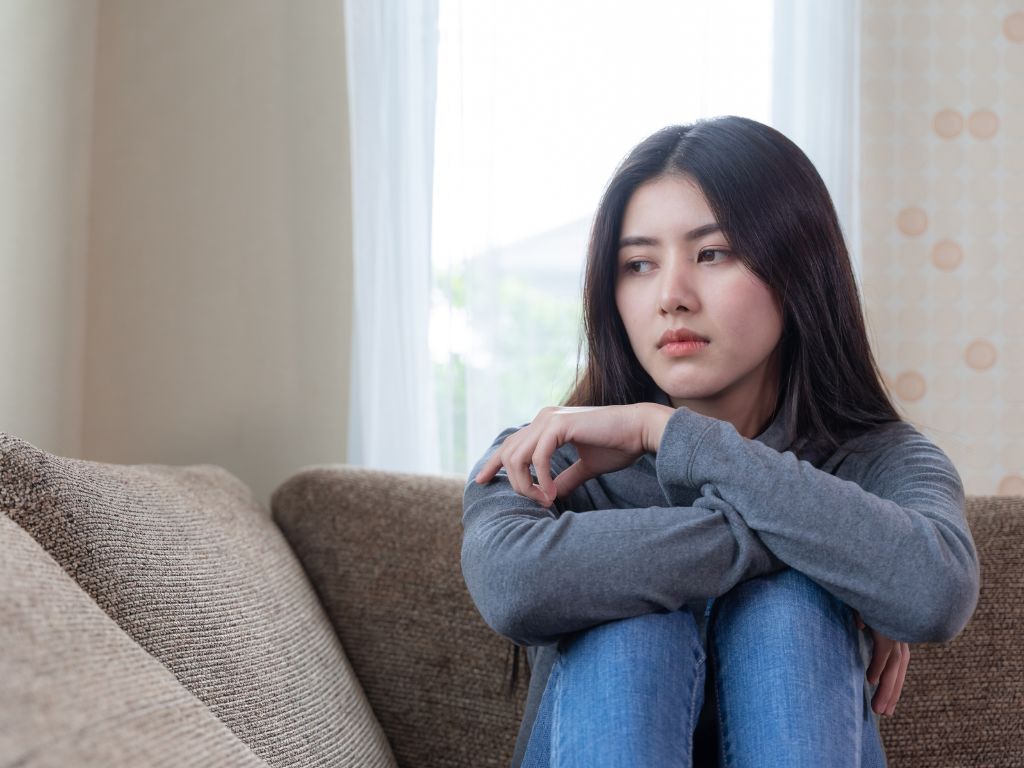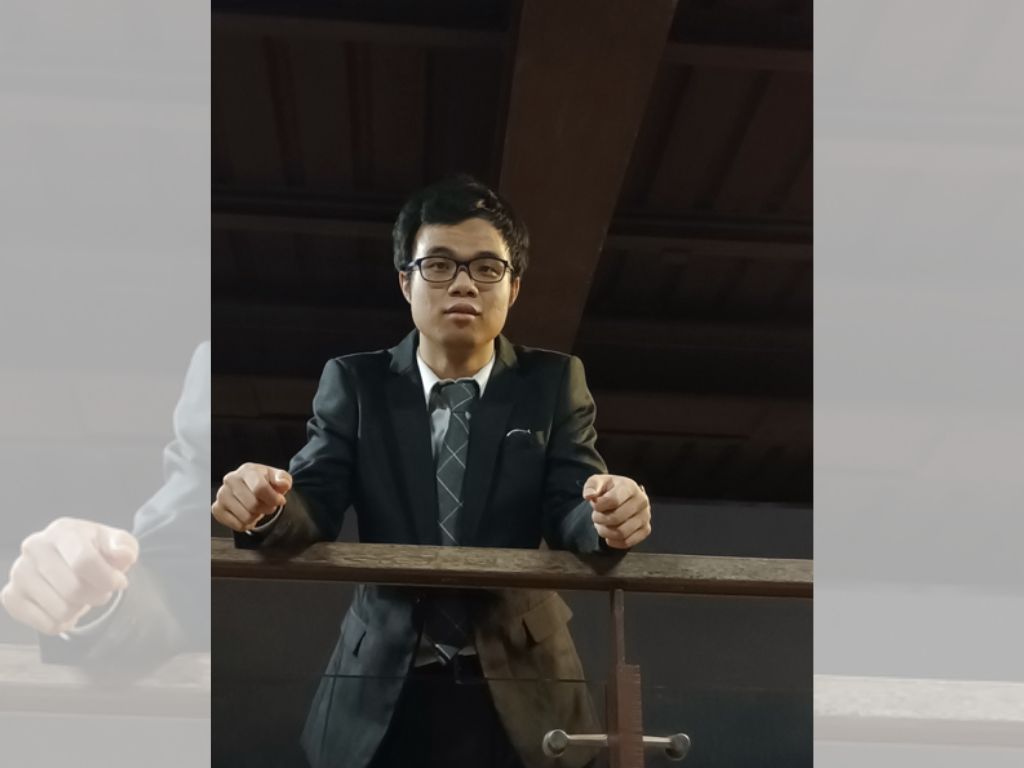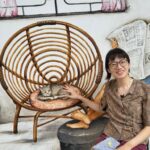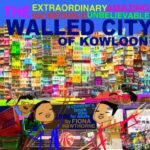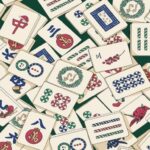Share
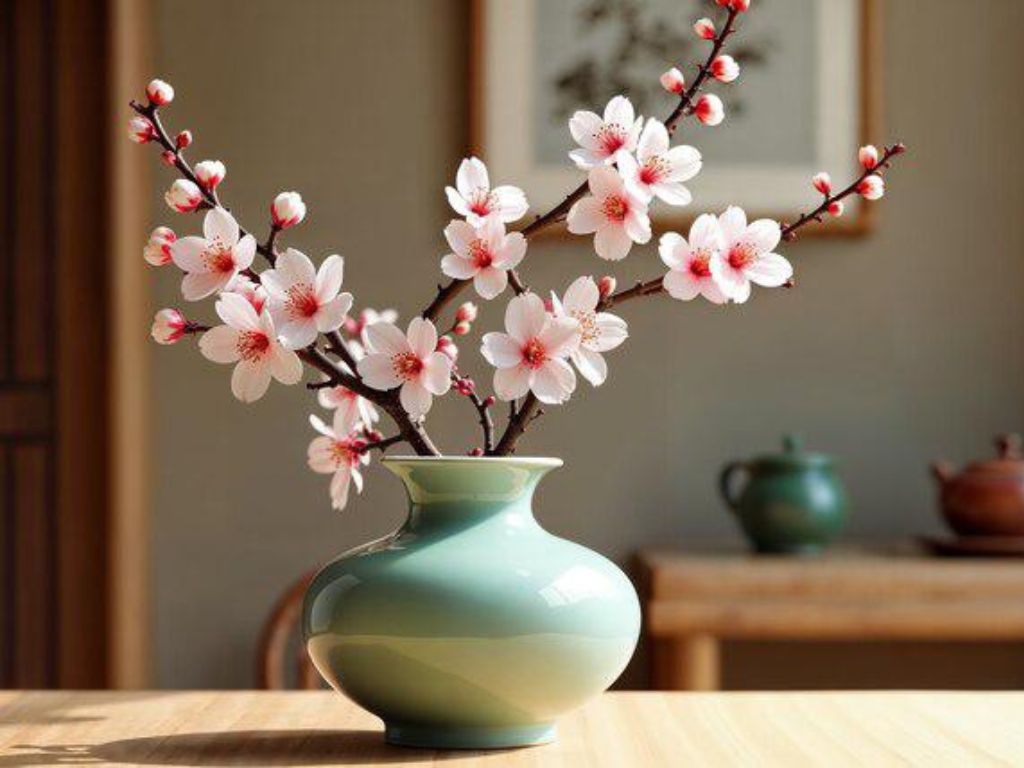
Hong Kong may be known as Asia-lite, but when it comes to Chinese New Year, there’s no mistaking that this city’s DNA is Chinese.
Also known as Lunar New Year or Spring Festival, Chinese New Year is celebrated both in and outside China. Korea, Vietnam, Singapore, Malaysia, Indonesia and the Philippines celebrate it as an official festival.
Of all the biggies, this is the grand dame of festivals, which trumps them all. It’s marked by public and statutory holidays — and to the delight of school kids, considerable time off school.
Legend has it that it all started with a mythical beast called the Nian. The Nian would eat villagers, especially children, feasts that would take place in the middle of the night. One year, all the villagers decided to hide from the beast, with the exception of a brave, older man who offered to pull an all-nighter to foil him. Said old man pulled out all the stops: putting up red papers and setting off firecrackers; and, true enough, the very next day, the villagers saw that nothing had been destroyed.
Today, the rituals of using red and sound and symbols representing sound continue. To visitors and newcomers in Hong Kong, this time of year offers a splendid visual feast of reds and golds; cherry blossoms, lanterns… and the mild weather makes it a really great time to visit.
Meanwhile, to old timers, the sound and movement of a lion dance, for example, never gets old. It is a thing of wonder that, for all of Hong Kong’s gleaming sophistication and modernity and focus on efficiency, rituals rooted in ancient myth continue, bridging past and present and connecting our shiny metropolis to a naive and folkish past.
Faced with an encyclopedia of symbols to do with Chinese New Year, a first step is to decode them. From the colour red, to the couplets gracing front doors, the images of firecrackers, greetings and foods prepared, served or given to guests and consumed, Chinese New Year is geared towards better living via: health, advancement in one’s studies or work, peace and harmony at home, wealth and family.
Our A to Z
A is for Abalone, Ancestors and the Almanac used for navigating the new year.
B is for Bazi, a Chinese astrological concept about how a person’s destiny or fate will play out.
C is for Candy box used to contain snacks for visiting guests; and for Couplets to place on both sides of your front door.
D is for Dumplings. to accompany a hot pot, perhaps.
E is for Eating together. Too bad if you can’t stand your Uncle Jo, as chances are you’re going to be thrown together a lot during CNY.
F is for Fook (the word for luck, which is placed on front doors); firecrackers to drive away bad energies; Feng Shui – the positioning of things for optimal luck; and Fireworks — a wonderful display will be set off on January 30th 2025. F is also for Five Generations (aka Prosperity Fruits).
G is for Greetings, Gold, and the God of Wealth. Early in the morning on the 5th lunar day of Chinese New Year is the day when many families worship the God of Wealth.
H is for House Cleaning, Hot Pot, and Hampers, the latter gifted to important family, friends and clients.
I is for Incense, burned in household family shrines in veneration of deceased ancestors; and at temples.
J is for Jai, a tasty vegetarian dish eaten on the first day of Chinese New Year to bring good luck; Joss sticks (another name for Incense in stick form and from which Hong Kong earned its ‘Fragrant Harbour’ moniker) and Jade worn to protect wearers from bad luck.
K is for Kung Hei Fat Choy, the Cantonese way of saying Happy New Year. See ‘Z’.
L is for Lai See aka lucky money; Lion Dances; and Lanterns.
Lucky Money: What's it all About?
Ever pragmatic, the rule of thumb has always been that if you’re a very young child, a student, not yet married or an elderly person, you don’t need to give lucky money because, it was assumed, you probably can’t afford to.
So, married adults give to their kids, friends’ children, guards in their residences, direct employees (including, at your discretion, helpers, drivers, trainers, tutors). And, grown-up children may give to their parents.
But, with an increasing number of adults not getting married or being single but working, some single aunts and uncles do opt to give to their junior relatives and elderly parents. It’s about spreading a little joy and reinforcing familial and societal positions and bonds. The younger and cuter you are, the better you’re likely to do in the Lai see stakes.
Amounts usually range from 10 to 1,000HKD but commonly hover around the 20, 50, 100HKD amounts. In bygone days, coins were also sometimes given; the point was to offer whatever you could, however small this was.
It is not expected that non-Chinese observe these customs, though if you happen to be on the receiving end of a red packet, you must accept it, with both hands and a Kung Hei Fat Choy, opening it later in the privacy of your home.
Because it is not okay to open Lai see in front of the giver, it can be difficult to work out later who gave what. To avoid confusion as to which Lai see packet should go to who, the Giver may purchase differently-sized and coloured Lai see packets for different denominations.
This way you can ensure that your friend’s son doesn’t receive 500HKD to spend on sweets, while your elderly parents aren’t offended with a paltry 20HKD.
Red packets are given primarily during Chinese New Year but may also make an appearance on other special occasions such as graduation and marriage. Givers may give one single packet, two packets or sometimes, even four in one go.
M is for Money. See Lucky Money: What’s It All About? above.
N is for Nian Gao, one of a few Chinese New Year desserts that is made with glutinous rice flour.
O is for Oranges – a healthy alternative to chocolates when you visit someone’s home.
P is for Peach Blossom, Pomelos, and Paper cutting, a long-practiced art.
Q is for… we’re stumped! If you can figure a CNY associated item, say [email protected] and we will reward you with a set of three Being Neighbourly notepads and pencils.
R is for Red, Relatives; and Red envelopes in which, ideally, fresh notes are placed commensurate with the givers’ means; and Reunion dinner, held on the eve of Chinese New Year, when family members come together for an evening meal.
S is for Spring rolls.
T is for Turnip cake, a cooked savoury snack served with chili sauce; Tong yuan dumplings; and Tangerines — all of which are consumed. The orange of the tangerines is considered to be lucky because it symbolizes wealth.
U is for… we’re stumped! If you can figure a CNY associated item, say [email protected] and we will reward you with a set of three Being Neighbourly notepads and pencils.
V is for Vegetarian food, that is usually consumed on Chinese New Year.
W is for ‘wéi lú’, literally, ‘to sit around the fire in Mandarin’, used to refer to New Year’s Eve dinner, aka Reunion dinner.
X is for ‘xin yi’, which means new clothes in Mandarin. People usually buy a new, brightly coloured outfit to wear at Chinese New Year.
Y is for Year of the Snake.
Z is for ‘Zhù nǐ xīn nián kuài lè’, ‘Wishing you a Happy New Year!’ in Mandarin.
Where to buy...
Here are some ideas that we’ve cobbled together for you, organised into three price categories $ (up to 499HKD) $$ (500-999HKD) and $$$ (1,000HKD up). We’ve also highlighted our Top Picks so you can cut to the chase for those last-minute trips to the shops.
Lai See Packets, Decorations & Candy Boxes
Having a rummage around the city’s stationery shops or the local shops along Queen’s Road West is a very good way to take a dive headfirst into Chinese New Year paraphernalia and see what you surface with. If you’re seriously planning on harnessing some good luck, you might want to decorate your front door, welcoming in luck with the customary ‘Fook’ character and affixing some calligraphy on top of the door and on either side. Whether it will be effective, will remain to be seen, but it’ll definitely look cheery!
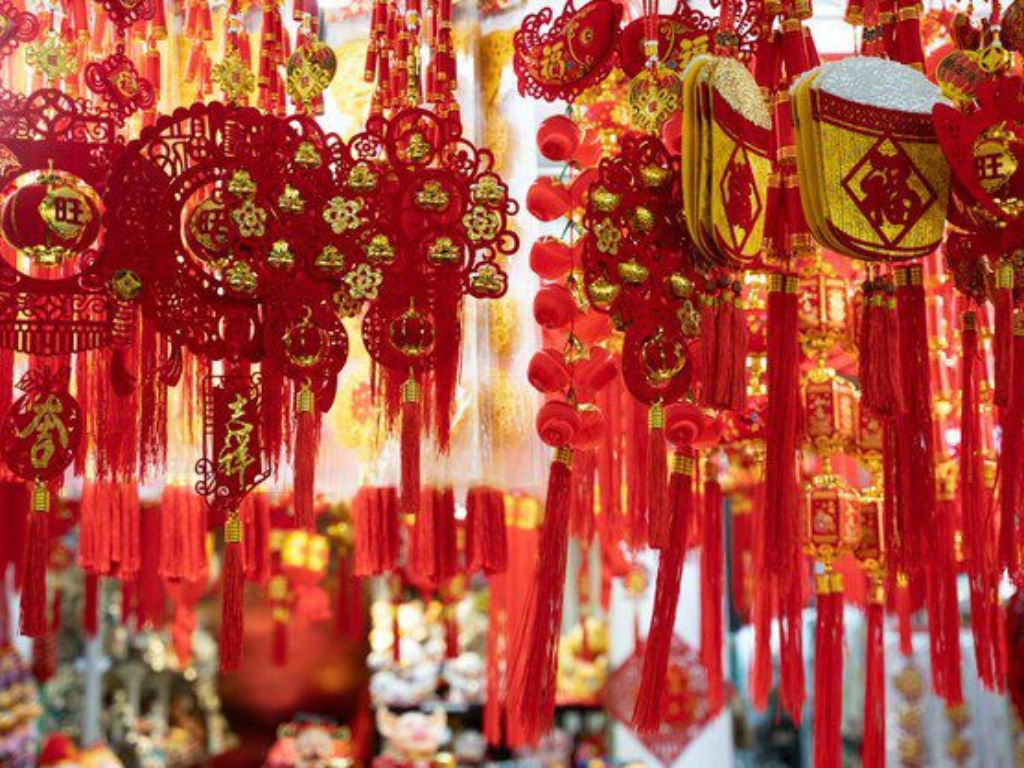
1. Sam & Company – $
This old timer is well-known for its ‘everything and anything’ packed to the ceilings and into every nook and cranny. The shop has an excellent array of season-specific offerings: whether it be CNY, Easter, Halloween or Christmas. Avoid their lunchtimes if you possibly can.
Sam & Company
38 Stanley St, Central.
- +852 2523 0338
- [email protected]
- www.samnco-hk.com
2. Yat Fat Stationers Co., Ltd. -$
As orderly and relaxed as its contemporary Sam & Company is shambolic, Yat Fat is hard to find until you’ve been there. Yat Fat has a well-considered selection of all-season items, plus CNY cards and other useful bits and bobs.
Yat Fat Stationers Co., Ltd.
2/F, Yat Fat Building, 44-46 Des Voeux Rd, Central.
- +852 2523 2628
- [email protected]
- www.yatfatst.com.hk
3. The Lion Rock Press -$-$$
Funky is the word we’d use to describe Lion Rock Press and its offerings. From on-sign zodiac hanging ornaments to greeting cards and lai see packets, LRP offerings are distinctive and memorable.
The Lion Rock Press
10th Floor, Unit 1005, Arion Commercial Centre,2-12 Queen’s Rd, Sheung Wan.
- +852 9367 5410
- [email protected]
- www.thelionrockpress.com
4. Japan Home Centre – $-$$
It isn’t the trendy choice, but Japan Home stores are cheap, reliable and ubiquitous (the Hung Hom shop is bigger than many, but they are everywhere around the city), which often makes them the easiest places to dip into and, more often than not, to find what you were looking for; and other things besides. IN CNY terms, they stock candy boxes, paper signage and synthetic cushion covers — a might tacky, but a surefire way to summon those CNY vibes immediately.
Japan Home Centre
Shop 7D, 92 Baker St, Hung Hom.
- +852 2303 0169
- [email protected]
- www.japanhome.com.hk
5. Goods of Desire -$$-$$$
From the little to the large, GOD works for locals and visitors with its cool selection of everything from coasters to clothing. Check out their Chinese zodiac key chains, God of Wealth cushion covers and for those who are difficult to gift, they carry beautiful lai see packets and gift vouchers.
Goods of Desire
G/F & M/F, 6 D’Aguilar Street, Central.
- +852 2890 5555
- [email protected]
- www.god.com.hk
Flowers & Plants
Just as paper decorations spell Chinese New Year, so too do a variety of specific flowers and plants including orchids, narcissus, peach blossom, and the lesser known Prosperity fruits (said to symbolize the aspiration for five generations living together). Plants are not just placed inside the home, but outside the door, and on either side of the door, space allowing, which makes an entrance that much more appealing.
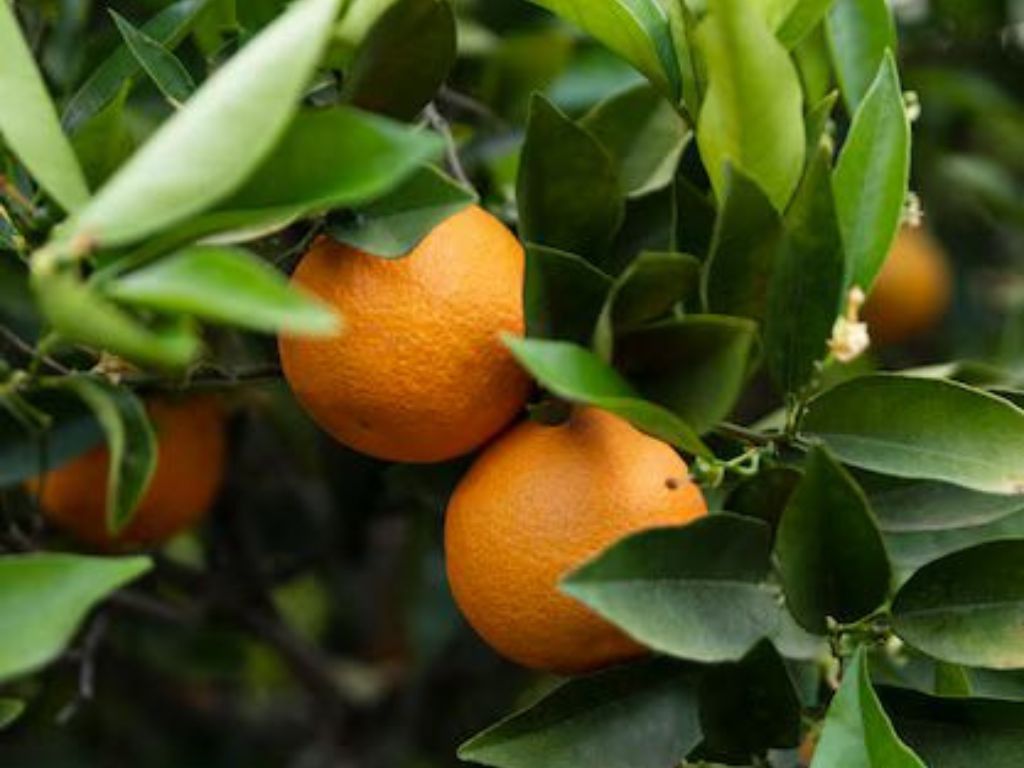
1. Grace & Favour HK – $$$
Grace & Favour HK is the winner of Hong Kong Best Luxury Florist award in the Asia’s Most Valuable Brand Awards. They have a selection of almost 50 floral arrangements for Chinese New Year, that include numerous orchids, some in blue and white porcelein, Ilex verticillata, known for its beautiful red berries and golden Forsythia.
Grace & Favour
Shop 02, Kwan Yick Building Phase 3, 158A Connaught Rd W, Sai Ying Pun.
- +852 9614 0037
- [email protected]
- www.graceandfavour.com
2. Anglo Chinese Florist – $$$
Anglo Chinese Florist has a 79-year old history in the city and along with florals most associated with CNY, boasts an enviable selection of tangerine and mandarin plants. Aside from the typical shapes, they also sell bonsai-styled and topiary arrangements. They also sell Prosperity fruits (5 generations living together) during Chinese New Year.
Anglo Chinese Florist
24 Lyndhurst Terrace, Central.
- +852 2921 2986
- www.anglochinese.com
3. Victoria Park CNY Flower Market – $-$$$
Numerous flower markets take place across the city, but if there’s one that is sure to offer what you’re looking for, and more, it’s this one in CWB. With its almost 400 stalls, it’s quite a sight. Last day discounts are customary, so if you’re willing to brave the crowds to save a bit of money, check out the relevant website: www.fehd.gov.hk.
Victoria Park
1 Hing Fat Street, Causeway Bay.
4. The Flower Market – $-$$
While the Victoria Park Flower Market is a seasonal affair that pulls out all the stops, the one in Prince Edward is the reliable year-rounder. Quieter, some would even say, a little underwhelming, it does pull more of a punch when the orchids, mandarin plants and peach blossoms lined up.
The Flower Market
Flower Market Road, Prince Edward, Kowloon.
Food & Food-related Gifts
Hong Kong’s food is one of its great draws and a whole range of seasonal specials are ushered out and gifted or prepared for guests; then, shoveled into hungry mouths at Chinese New Year. This includes the ‘cakes’: savoury options such as Turnip and Taro cakes; and sweet treats: Rice Flour Cake, Coconut Rice Cake, and so forth; abalone, mandarins and oranges. The list goes on and will keep you sated for weeks to come.
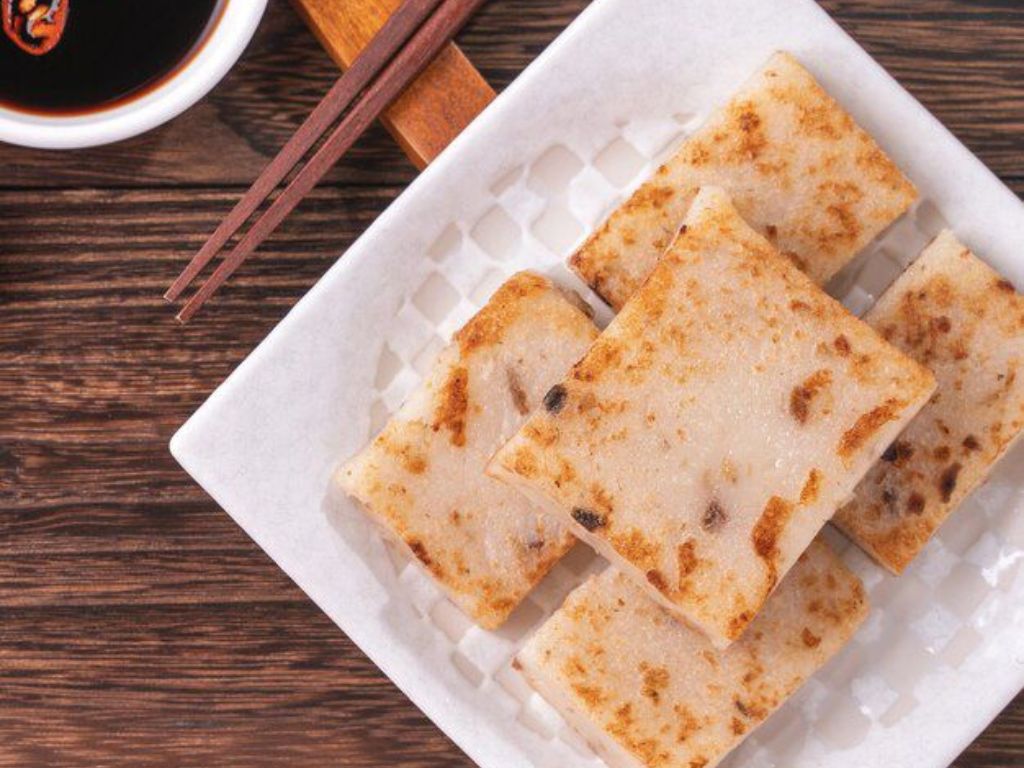
1. Pat Chun – $$-$$$
Pat Chun is a family business that is known for its traditional brewing of fermented sauces and authentic ingredients. It has two shops, one in Mong Kok and the other near the escalator on Stanley Street, and sells a wide variety of candy box sweets and savoury snacks and sweet and savoury turnip and glutinous rice cakes.
Pat Chun
136A Fa Yuen St, Yau Woo Building,
Mong Kok, Kowloon.
- +852 2392 6862
- [email protected]
- www.patchun.com
2. City’Super -$$- $$$
A posh supermarket like its Admiralty peer, GREAT, City’Super is great for a browse. For targeted Chinese New Year shopping, it has a good array of frozen tong yuen, a traditional Chinese dessert shaped into balls of varying sizes served in a hot broth or syrup. Tongyuen’s name is a homophone for ‘reunion’ and so it’s often served at Chinese New Year.
City’Super
IFC Mall Level 1, Shops 1041-1049, Central.
- +852 2429 8588
- [email protected]
- www.online.citysuper.com.hk
3. Island Shangri-La – $-$$$
The Hong Kong-Island outpost of this 5-star hotel offers a curated selection for Chinese New Year that makes for great gifts that recipients will be suitably awed by. Think everything from sweetened walnuts and XO Chili Sauce to a frozen poon choi for four (poon choi is a multi-layered dish of numerous ingredients that takes its name from the basin in which its served).
Island Shangri-La
Pacific Place, Supreme Court Road, Central.
- +852 2599 3000
- [email protected]
- www.shangri-la.com
4. Tsui Hang Village – $$
The savoury ‘cakes’ from old timer, ‘The Village’, as it’s known, are a must-do for those in the know. Cakes are available as long as stocks last, and this is not always long as this place is popular. Tsui Hang Village is a Mira Dining Group restaurant, that, in addition to its eatery in Central, has outposts in Causeway Bay and TST.
Tsui Hang Village
16-18 Queen’s Road, New World Tower 2,
Central.
- +852 2524 2012
- www.miradining.com
5. Kee Wah Bakery – $
Kee Wah is an unassuming value for money choice that offers perfectly good gift options at very reasonable prices. There are more than 50 outlets across the city: its QRE location is a sizeable shop and there is a pared-back first floor cafe upstairs on the first floor. CNY offerings include puddings, gift boxes of egg rolls and other assorted snacks and items specially intended and packaged for children.
Kee Wah Bakery
188 Queen’s Road East, Wan Chai.
- +852 2148 3388
- [email protected]
- www.keewah.com
6. Mercato – $$-$$$
While many of our listings play to a Chinese-seeking crowd, Mercato is one of the city’s delis that has come up with CNY hampers for those whose tastes may run in a more Italian direction. Their fresh fruits, gourmet chocolates and premium teas are perfect for gifting and family gatherings.
Mercato
53 Caine Rd, Mid-levels.
- +852 2898 9000
- [email protected]
- www.mercatogourmet.com.hk
Jewellery, Clothing & Bags
So, you’ve put up the decorations, gotten in the flowers and plants and have bought the gifts, but now… what are you going to wear? It’s often the last thing we organise, especially when it comes to outfitting ourselves. If you’ve done good this year and have it sorted, congratulations! For those like us, who’ve been rushing around at 100 mph, but haven’t quite got there, here’s some inspo for a quick dash around the shops.
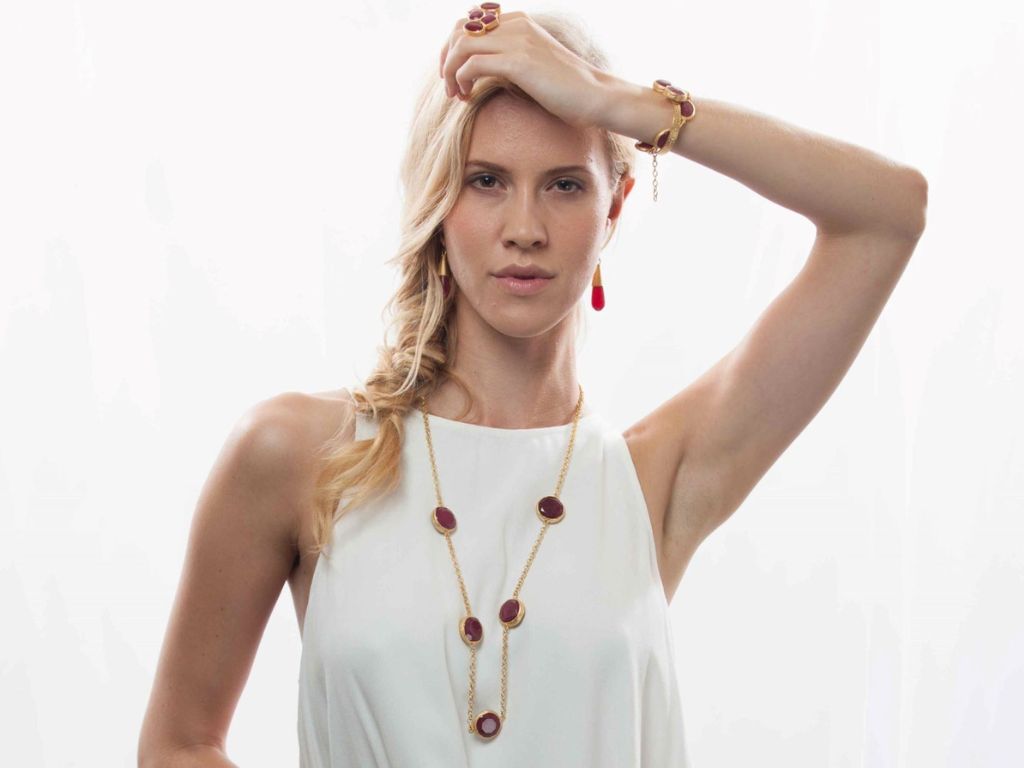
1. InStyle Fashion – $-$$
InStyle Fashion Fashion is offering its fair share of reds this year, where it concerns jewellery (and the handbags, for which they are best known). If you’re shy about wearing red clothing, accents can provide just the right amount of oomph to pep up an outfit and show that you care that it’s Chinese New Year. Dip into their bijou Central stockroom to try out different looks. We bet you won’t leave empty-handed.
In Style Hong Kong
Old Bailey St, Central.
- +852 3157 0447
- www.instylefashionhk.com
2. Chantel Shafie – $$$
The 2025 Hong Kong Snake Medallion necklace does not come cheap, however, it is the perfect ‘wear me now’ and keepsake for 12-years time, when the Year of the Snake will roll around again; and… it’s the perfect on-trend accessory for Chinese New Year. Made from 18K yellow gold, it boasts 0.4 carats of VS collection diamond and is available on a 16-inch (approx. 40.6cm) or 18-inch (approx. 45.7cm) 18k mixed gauge gold chain.
Chantel Shafie
3. Shing Fook Jade – $$
Every year, the inflection of every word uttered by Chinese astrologers’ is carefully observed and almanacs fly off the shelves of streetside newspaper stalls, both to ascertain the luck the next year will bring for each Chinese zodiac sign. For those whose luck is destined to clash with the Year of the Snake, jade amulets can be purchased to mute and counteract bad energies. The Chang husband and wife team behind Shing Fook Jade are ready to assist.
Shing Fook Jade
Burlington Arcade, Nathan Rd,
Tsim Sha Tsui.
- +852 6301 9236
- www.guidefong.org/Shing-Fook-Jade
4. Intimissimi- $$-$$$
Buying red underwear is a common practice at Chinese New Year as red is a lucky colour, traditionally brandished to ward away mythical monsters. Harness luck, keep the cold at bay, or fire up your relationship. Do you need any more reasons to get in there and start fitting? Apart from the TST outlet, the Italian brand has outposts in Central and beyond.
Intimissimi
Burlington Arcade, Nathan Rd,
Tsim Sha Tsui.
- +852 3971 0229
- www.intimissimi.com
5. Li Yuen Street East and West – $-$$
In a city of gleaming shopping malls, the parallel Li Yuen streets East and West are a really delightful standout experience that harks back to earlier days in the territory, when this type of outing was much more customary, rather than being an exception. There’s still the silk scarves and the reversible Chinese mandarin-collared Shanghai-Tang rip offs, but they do the trick (at wallet-friendly prices), and you’ll spot the same stall keepers from donkey’s years ago, with whom you can haggle a little, and it’s all really rather nice.
Li Yuen Street East and West
Li Yuen Streets East and West, Central.
6. Shanghai Tang – $$$
Shanghai Tang offers men and womenswear from Tang shirts and jackets to qipaos. The brand is known for its impeccable craftsmanship and sophistication. Experience a seamless fusion of contemporary Asian aesthetics with a touch of chinoiserie, this CNY. Shoppers can enjoy a New Year’s 15% discount on a minimum spend amount, which takes a bit of the sting out of the price tags. The discount is valid until 5 Feb.
Shanghai Tang
Shop 105B, Pacific Place, 88 Queensway, Admiralty.
- +852 2918 1505
- [email protected]
- www.shanghaitang.com
*The Buy Nothing groups we set up across Hong Kong support our belief in the power of community to provide the plenty we need in our lives and mean that you don’t need to spend money in hardship times. Buying aside, a good way to shower love upon your friends and family is to use hyper-local gift economies or community groups like Being Neighbourly to reduce, reuse and recycle, taking care of the planet as if it were a child. And remember, a hug, kind word and a bit of attention can be priceless.
Share
About the Author
Being Neighbourly
For over 20 years, the people behind BN have been creating content on the best things in life: food, travel and inspirational people.
Coming Soon:
Available soon in our Shop!
Snippets
Stay Up To Date
Want the latest insights and fresh content delivered straight to your inbox? Subscribe to our newsletter and stay updated with our exclusive content!
